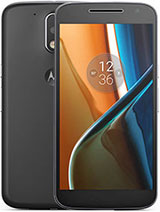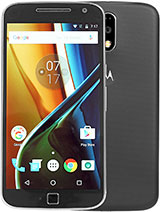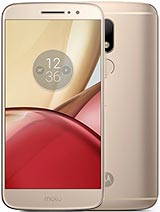Lenovo K6 Note review: Noteworthy
Noteworthy

Final words
The Lenovo K6 Note is positioned well into the budget realm. Not many internationally known, trusted brands have strong offers in this segment. Competition from the likes of Xiaomi or Meizu or LeEco are fierce to say the least.

However, considering that Lenovo, as well as other more internationally-friendly manufacturers, like ZTE and Huawei also come out of China, there isn't really too much choice to be had as far as manufacturing goes, around the $200 or so mark nowadays. Even Motorola, with its legendary Moto G value line, is more expensive.
However, in 2017, that is no longer a criticism in itself. Value is simply China's game and there is a lot of it to be had from the Lenovo K6 Note. The point we are trying to drive across here is that when shopping on a shoestring budget, factors like proper localized services, support and subsidized carrier deals might end up playing a way bigger role in the purchase decision than usual. Let's face it, $200 simply isn't enough to score you a hardware powerhouse, but nowadays that can realistically land you with just the right mix of strengths and compromises to meet your personal needs.
Lenovo K6 Note Key test findings
- The K6 Note is not flashy or extravagant in any way, but it is well-built and stylish. It builds on the K5 Note styling with a few notable refinements. The only complaints we have are the slippery sloping back and perhaps the slightly awkward button placement.
- The 5.5-inch LCD panel gets quite bright and offers good contrast. Sunlight legibility is sufficient, but not spectacular. The same goes for color accuracy.
- The fingerprint reader is very quick and accurate; it's also always-on so it would wake the phone from standby.
- The device lacks NFC, as well as a video out.
- Most of the extra weight on the Lenovo K6 Note seems to be due to the bigger battery. The phone makes good use of the extra juice and scores an Endurance rating of 91h.
- Lenovo's ROM is close to stock in terms of aesthetics. It is also almost entirely bloatware-free. There are, however, quite a few impressively powerful added features baked right into the OS. Power users should be pleased.
- The Snapdragon 430 chipset isn't particularly powerful, but it will easily get you through most everyday tasks.
- The single loudspeaker is only average in terms of loudness. The included Dolby Atmos equalizer tech does help, but it seems a bit wasted on a mono speaker setup.
- There is some added value to be had by picking up the ANT VR headset accessory. VR seems to work well, even with the limited hardware and Theatermax is a nice, albeit quite limited alternative to setting up and using a bigger screen in certain situations.
- Audio output is very clean, but also a bit on the quiet side.
- The Lenovo K6 Note offers a powerful camera experience. Smart modes work well. Stills quality could have been better but it is still acceptable.
- VIdeo recording is limited to 1080p. Other than that, recording do come out with an acceptable level of detail and clarity.
The Lenovo K6 Note offers a straight-forward, no-frills experience. The device is well built and doesn't rely on any flashy aspects or gimmicks to sell. That extends to software and performance as well.
Lenovo has really stepped up its game lately, and the Marshmallow-based ROM on the K6 Note is slick, stylish, it comes really close to the Vanilla aesthetic and runs surprisingly well, given the modest hardware. To top things off, it is filled to the brim with convenient proprietary features.
While the camera is far from great and is clearly held back by the chipset, Lenovo's layer of smart assisting algorithms on top makes the most out of the situation as well.
Theatermax has its place on the market as well. While quite rudimentary, it does provide a quick alternative to owning or using a bigger display. We can also imagine the ANT VR experience would work well for many people as a good first step into mobile VR if it weren't for its high price tag.
As for the alternatives, we kick things off with Lenovo itself and its subsidiary - Motorola. The Lenovo K5 Note is still a pretty good offer. This is quite understandable, since the two devices are well under a year apart in release dates. The pair is also very similar in design, power and even software features. Bear in mind that the K5 Note did launch with Android Lollipop and could be stuck on it.




Lenovo K5 Note • Motorola Moto G4 • Motorola Moto G4 Plus • Motorola Moto M
As for the Moto brand, the G4 lineup is definitely a nice match. The G4 Play is admittedly a bit on the lower end of things and with a smaller display, so we won't be recommending it outright. Then again, that is reflected in the price tag. $200 can easily get you the regular Moto G4. Opting for it, you end up with a little bit of extra processing power and an AOSP Android experience, among other things. Depending on your personal preference, the latter might be a bonus or quite the opposite.
You could even opt for the higher-end G4 Plus and add a fingerprint reader and improved camera to the mix for a few dollars more. Lenovo often holds promotions, so the possibility of a good deal is definitely there. You could look into the Moto M as well, If it is available on your market.
As already mentioned, few other big-name companies have currently managed to put out competitive offers at this price point. Most major players simply have way too much overhead associated with wider availability, support and advertising. So, at around the given price cap, offers tend to be less impressive hardware-wise. Samsung, for one, has the "J" and "On" lines. The former is better overall and it's a much closer match to the Lenovo K6 Note.
The Galaxy J7 (2016) is a clear recommendation here, in its Exynos 7870 variant. It does come with a handicap in resolution at 720p. But, then again its panel is of the Super AMOLED variety, which in combination with the 14nm production process of the chipset manages a total of 101 hours of endurance out of its 3300 mAh battery.
However, it is worth noting that the J7 (2016) typically costs a few dollars more than the Lenovo K6 Note. If you have no wiggle room in your budget, the J5 (2016) might be a better fit, but with quite a few more compromises, like the Snapdragon 410 and 5.2-inch screen. The Galaxy On7 does resolve the latter but also comes with a simple TFT panel and a hit to overall material quality.



Samsung Galaxy J7 (2016) • Samsung Galaxy J5 (2016) • Samsung Galaxy On7
Outside of camp Samsung, Asus has the Zenfone Max ZC550KL (2016) to offer. It also sits at 5.5-inches and manages to outdo the Lenovo K6 Note with a Snapdragon 615 chipset and a 5,000 mAh battery. On the flipside, however, the panel is only 720p. The Huawei Honor 5C comes pretty close to the Lenovo K6 Note package as well. Its display is a tad smaller at 5.2-inches, but then again, the price is a bit lower as well.


Asus Zenfone 3 Max ZC520TL • Huawei Honor 5c
Now, before we continue to Xiaomi and Meizu, our typical warning is in order. While purchasing handsets straight out of China can have its benefits in the price to value department, there are often additional transport and duty fees to consider. Also, the issues of support and regionalization still stand, although most bigger companies have made great progress in their international approach. That being said, for some users and on certain markets, there is a lot of value to be had from Xiaomi's offers.
The Redmi Note 3 Pro, for instance, is a pretty good bet. The same goes for other models like the new Redmi Note 4 or the Redmi 3S Plus or Prime, depending on where you live. Also the Redmi Pro. And yes, it is evident you do have to pick the right model carefully as all have 5.5-inch displays and pretty similar outward appearances.




Xiaomi Redmi Note 3 • Xiaomi Redmi Pro • Xiaomi Redmi 3s • Xiaomi Redmi 3s Prime
At least things are a lot less confusing on the Meizu front. Local pricing is typically quite similar to Xiaomi's and below $200 most of the time. The slightly older m3 Note is still a pretty good choice, but you could also go newer with the m5 Note, provided it is available near you, as it is still pretty new. And if you would rather go for a more premium 5.5-inch option, the MX6 fits the bill.



Meizu M3 Note • Meizu M5 Note • Meizu MX6
Last, but not least, we can't fail to mention some other admittedly good deals. The LeEco Le 2 is definitely one of them. With a 5.5-inch FullHD panel and a Snapdragon 652, along with 3GB of RAM, it is in a whole other performance league than the Lenovo K6 Note. The Coolpad Note 5 seems like a fairly good bargain as well.
All things considered, the Lenovo K6 Note won't steer you wrong. If it just so happens to be on the offer sheet over at your carrier of choice, don't hesitate to snatch one up. But then again, if you are on the open market and don't mind investing the extra effort, shopping around could, potentially yield a "feature mix" that may be better suited to your personal needs.
Reader comments
- Anonymous
- 22 Mar 2021
- akp
Install volume booster goodev
- Shav
- 26 Dec 2019
- U@$
Switch the Dolby atmos toggle to on. Select match volume/ level volume to "on" in the Dolby atmos application (preferably, in the custom mode). Your problem of loudness in headphones will be solved to some extent.
- Vishal
- 09 May 2019
- U@y
I have Lenovo k6 note. But this mobile volume is very low. So, please help me for increase volume.

